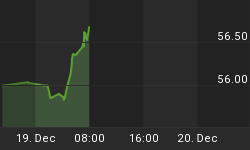As the U.S. economy seemingly limps out of the Great Recession most analysts now assume that the Federal Reserve will soon join the tide of other central banks and bring an end to the current era of unprecedented monetary expansion. Markets expect that Fed will begin withdrawing liquidity this summer, not too long after this latest round of the quantitative easing comes to an end. But this is simply a delusion.
There are many political and economic reasons why the Fed will find it extremely difficult to absorb the liquidity that it has relentlessly pumped into the economy since the beginning of the financial crisis. But its biggest problem may be that the ammunition it carries on its balance sheet is insufficient to the task.
In order to withdraw liquidity the Fed must sell most, if not all, of the assets on its balance sheet. The questions are: what types of assets will it sell, how fast will they sell them, who will buy, and what price will the market bear?
In December 2007, before the Great Recession began the Fed had an equity ratio of around 6% on a balance sheet that totaled approximately $900 billion. The assets it held at that time were almost exclusively comprised of short term Treasury debt. This had been the norm for the vast majority of Fed history. Given the size of the Treasury market and the bankability of its short term debt, the value of such a portfolio was considered virtually bulletproof.
But beginning in late 2008, as financial institutions careened towards insolvency, the alphabet soup of Fed lending facilities (TAF, TSLF, PDCF and the CPFF just to name a few) bought all kinds of assets that the Fed never before held. Through quantitative easing efforts alone, Ben Bernanke has added $1.8 trillion of longer term GSE debt and Mortgage Backed Securities (MBS). (In fact, the Fed now holds more of these mortgage instruments than their entire balance sheet before the crash.) This has drastically changed the complexion of the assets it must now sell.
But as the size of the Fed's balance sheet ballooned, the dollar amount of capital held at the Fed has remained fairly constant. Today, the Fed has $52.5 billion of capital backing a $2.7 trillion balance sheet. While the size of the portfolio expanded three fold (and the quality of its assets diminished), the Fed's equity ratio plunged from 6% to just 2%. Prior to the bursting of the credit bubble, the public was shocked to learn that our biggest investment banks were levered 30 to 1. When asset values fell, those banks were quickly wiped out. But now the Fed is holding many of the same types of assets and is levered 51 to 1! If the value of their portfolio were to fall by just 2% the Fed itself would be wiped out.
Subscribe to Euro Pacific's Weekly Digest: Receive all commentaries by Peter Schiff, Michael Pento, and John Browne delivered to your inbox every Monday.
Click here for free access to Euro Pacific's new special report: What's Ahead for Canadian Energy Trusts?
Be sure to pick up a copy of Peter Schiff's hit economic fable, How an Economy Grows and Why It Crashes.















